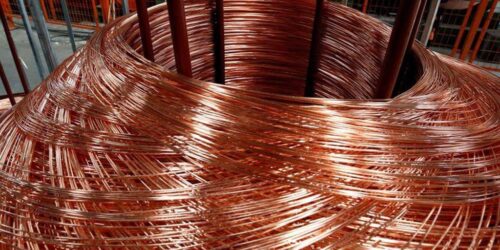Good things tend to happen to the global economy when copper rises and bad things when its price falls on global metal exchanges. That is why Wall Street lore has given copper a PhD in macroeconomics; because its price trends predict turns in the global economic cycle ahead of time, making it a rare leading indicator. Since it is used in most sectors of the economy, like homes, factories, electronics, power generation and transmission, Dr Copper usually provides a more accurate reading of the global economy’s pulse than most central bank governors and chairmen, as was the case during the 2008 crash when shorting copper stocks was pretty much a license to print free money in a market deep in red even as global monetary policy nerve centres like the Federal Reserve (Fed), Bank of England (BoE) and European Central Bank (ECB) went about their all-will-be-well routine.
The pandemic and initial lockdowns caused a predictable crash in the base metal and Dr Copper settled in March 2020 at levels not seen since 2016. Since then, though, it climbed steeply till May 2021, as copper futures rose almost 146 percent on the back of economies reopening and a steady march back to pre-Covid levels of aggregate demand and international trade. But then it turned again and since mid-June it’s been caught in a narrow trading range, with markets now worrying if it’s signaling yet another slowdown, perhaps even another recession in the world’s biggest economies.
The macro landscape is definitely changing, particularly in China, where a serious energy crunch is already beginning to hurt manufacturing. Add to that the fallout of the Evergrande scandal that threatens contagion in the entire real estate sector, a powerhouse of metals demand for more than two decades, and copper’s loss of momentum becomes easier to understand. Then there’s Europe’s energy problems, where even countries like Germany are forced to resort to coal because of super-expensive gas, the Fed’s threats of ‘tapering’, and the resurgent dollar, and the situation appears grim indeed. In an ominous move Goldman Sachs, the world’s leading investment bank, has lowered its quarter-on-quarter forecast for third-quarter growth in China to zero percent.
So far long-term copper prices are still on an uptrend, but there are very clear headwinds in the near term, leading to an unnatural macro-micro imbalance. But now signs are beginning to appear that cast doubts on the strength of the US recovery as well. That sounds strange since second-quarter GDP clocked in at 6.5 percent, with third-quarter projections of a robust 7 percent or thereabout. Other, more sober, projections put it around 4.5 percent. Yet even this might be an over-estimation because problems arising over the last couple of months, like supply chain disruptions, increasing energy costs and especially semiconductor chip shortages are affecting bottom lines of what the market calls diversified industrials, which might cause companies to revise down earnings as they announce third-quarter results. These things begin to explain the shocking analysis delivered by the Atlanta Fed, which projects third-quarter GDP growth at 1.3 percent.
If downside pressures continue then there’s nothing to prevent immediate term pessimism from spreading to the longer term as well. Exogenous factors like Covid, especially when there’s a new, more deadly variant every few months, also continue to dampen global demand. And even if another recession, which technically requires two consecutive quarters of negative growth, is out of the question for the moment, faltering growth with rising inflation because of unprecedented stimulus packages in all countries could still raise the sepctre of stagflation. And that, should it happen, will trigger yet another global debate about the timing and direction of interest rates.
All this is pretty bad news for countries like Pakistan which are already stagflated most of the time. If the global economy tanks right in the middle of our experiment with a hyper-expansionist, subsidy-laden budget, then there’s a very good chance of exports and remittances collapsing; causing an implosion in the current account deficit and effectively giving the ruling party the proverbial kiss of death so close to the election.
Copper’s correction since the May peak could of course be a minor adjustment in the larger uptrend, because it had been making higher highs and higher lows for a good 14 months. But if it does break from the present trading range to the downside, then it’s as reliable an SOS signal as any in the market. For now, Dr Copper is noting a discomforting fall in global demand.





